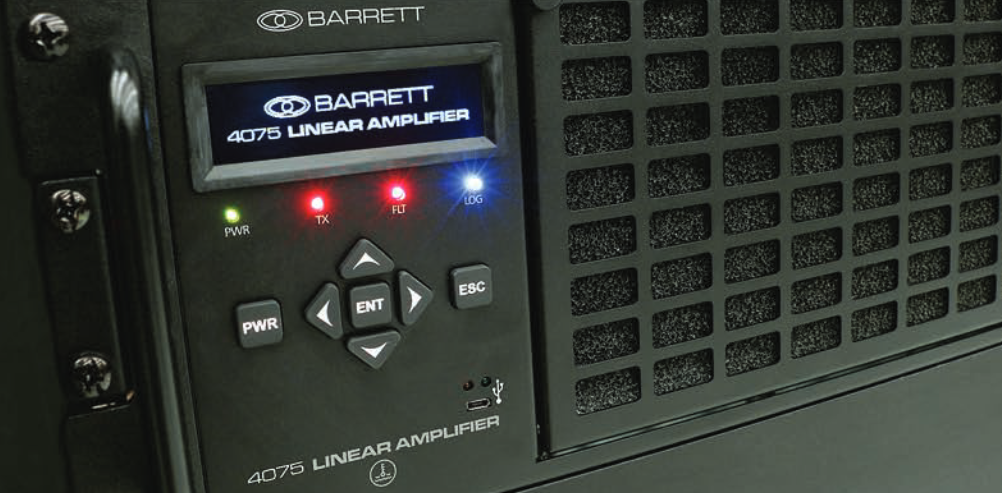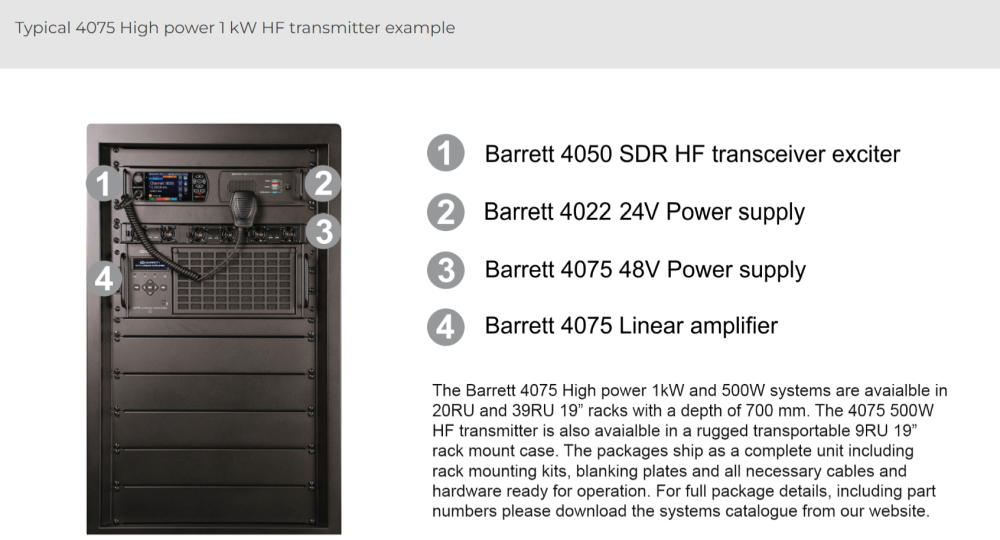
In the midst of a natural disaster, accurate information can make the difference between life and death. It also provides timely data to response and recovery teams to formulate the most appropriate response, personal protection, and recovery strategy, and to disseminate tactical actions to distributed personnel. This is where emergency radio communication can become an essential component in response to natural disasters.
Most public safety organisations’ emergency radio communication protocols are put in place to ensure contact between those that might be affected by the incident and emergency workers remain available at all times and in all operational conditions.
Over the last 20 years, more effort has been made to prepare emergency communication plans to ensure the existence of a robust communications network that would enable persistent radio communications systems within regions, cities, and associated geographic areas.
High Frequency (HF) technologies offer ‘infrastructure-free’ voice and data communications. When a natural disaster or other major incident occurs, HF remains operable, while many other means of communication are compromised.
Due to the importance of their activities, public safety and emergency service organisations belong to the field of what is known as mission-critical communications.
To meet mission-critical requirements, fundamental principles must be met. These include 24/7 availability to ensure that users can access the communication system at all times.
These emergency radio networks ensure the availability of communications, which must be 99.999% guaranteed in any situation. They prioritise the operational needs of users, offer a larger coverage area, and include sparsely populated or unpopulated areas to ensure a homogeneous minimum level of service throughout the territory; and due to the critical nature of communications, they provide a higher level of encryption and security.
Barrett Communications projects
For specialised, independent, long-distance, and medium-distance radio communications, Barrett Communications designs, manufactures, and markets HF and VHF radio equipment. Using fixed-base station, mobile, and manpack portable applications and hardware, radio networks can be set up to deliver voice, email, data, fax, and tracking solutions. Barrett‘s customer base, which is spread across more than 150 countries worldwide, has easy access to its global distribution and support network.
America
US domestic and territorial security
High Frequency (HF) medium and high-power radio communications equipment has been deployed by Barrett and its partners – to help with communications coverage across the entire US.
All US states and territories now will possess a number of medium and high-power HF radio systems, thanks to a US federal agency. Legacy HF communication systems are being replaced with Barrett’s innovative technologies. The communication network has been upgraded using Barrett’s equipment to cover all required sites.
In the US and its outlying territories, the systems will be utilised to offer AES secure digital voice and data connectivity. “This is an historic delivery for Barrett USA, solidifying its status as a trusted partner to the US Federal Government,” said John Eschenfelder, general manager of Barrett Communications USA.
The systems include Barrett 4075 high-power HF systems, which boost the strength of transmissions and are offered in 500W and 1kW variants. When used with secure digital voice, this can increase the capability of overcrowded communications channels where analogue voice reception can be very poor.
Users can then encrypt their connections, creating secure networks that can send data over great distances and in noisy areas without relying on the current communications infrastructure.
Several dozen 4075 high power and 4050 HF SDR systems have been delivered to the federal agency, to supplement its terrestrial, fibre, and satellite communication networks, to guarantee all vital information continues to be transmitted via these radio networks between locations across the nation, to regional hubs, and to a centralised headquarters.
The systems have variable rate digital voice, MIL-STD-188-110B, and 2G ALE (MIL-STD-188-141B JITC certified) modems, and both voice and data are secured using AES-256 encryption. In order to enable IP remote control of the platforms using its desk console system, Barrett worked with the customer to modify the system specs.
International
These two programs were funded by the US Government, and Barrett worked through prime or sub-prime contractors to win and deliver on the contracts.
Coastal installations
As part of an ongoing mission to help improve international coastal security and support the US mission in eastern Africa, Barrett supplied its PRC-2080+ VHF encrypted handhelds and high power 4075 HF base stations (with digital voice and 2G ALE) equipment to a naval force in Africa.
The VHF systems are ideal for patrols and vessel boarding because, in contrast to conventional commercial VHF/UHF, the PRC 2080+ uses low-band VHF that can communicate over greater distances and penetrate many hull constructions. The PRC-2080’s rugged construction and efficient mode of operation makes it an ideal solution for partner nations’ security forces.
While coordinating security operations, high-power HF systems are used to transmit from ship to shore and between shore sites. The US Government and host country made key decisions based on affordability and usability in order to satisfy their high standards.
The Barrett 4075 offers full-duty cycle operation utilizing an industry-leading liquid-cooled design. The industrial power supplies and ease of operation (through the multilingual 4050 HF SDR touch screen interface) and reliability led the integration partner to choose this system over others in the market as the best suited for partner forces.

Anti-piracy systems
A host nation has been supplied RIBs (Rigid Inflatable Boats), and Barrett provided its PRC-4090 (secure digital voice, data, and ALE) and 50W and 5W PRC-2080+ systems. These radio platforms were integrated with intercommunication systems on the vessels and will be used to protect coastlines and fight piracy off the coast of another African nation.
The VHF and HF systems are used in tandem as part of a larger anti-smuggling, anti-piracy, and anti-drugs campaigns. For distances under 30 km, VHF systems can enable ship-to-shore and ship-to-ship communications, whereas HF systems are required for ranges exceeding 30 km. The HF radios are equipped to send secure voice, GPS, and data to other ships and land sites.
Additionally, the ships are outfitted with PRC-2080+ low-band VHF handheld radios for use by boarding parties. The VHF radios are best used for intrasquad and squad-to-ship communications. They are encrypted for operational security, as well.
Other international installations
Chile and India
Two new multi-million-dollar contracts for global peacekeeping operations, consisting of high-frequency (HF) and very high-frequency (low-band VHF) communications systems, were won by Barrett Communications in 2019. These were for defence, peacekeeping, and government clients in Chile and India for peacekeeping operations.
The Chilean Navy wanted to increase the number of Barrett HF high-power systems it had at the time. The long Chilean coastline and extensive waterways are protected by these systems’ monitoring and oversight functions. The contract included Barrett 4050 HF SDR base stations and liquid-cooled Barrett 4075 1 kW high-power systems to upgrade the navy’s Barrett radio equipment.
The Indian Government received 541 commercial HF base station systems from Barrett. By connecting government organisations across India. These were to assure the resilience of its emergency communications infrastructure, with the HF systems playing a crucial role in providing resilience.
Further details on emergency radio communication:
Please visit www.barrettcomms.com


